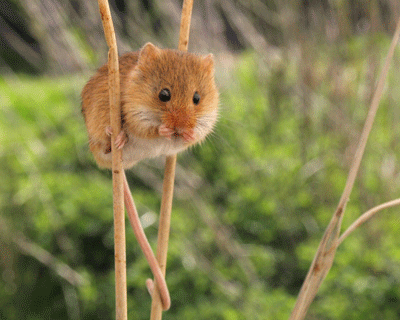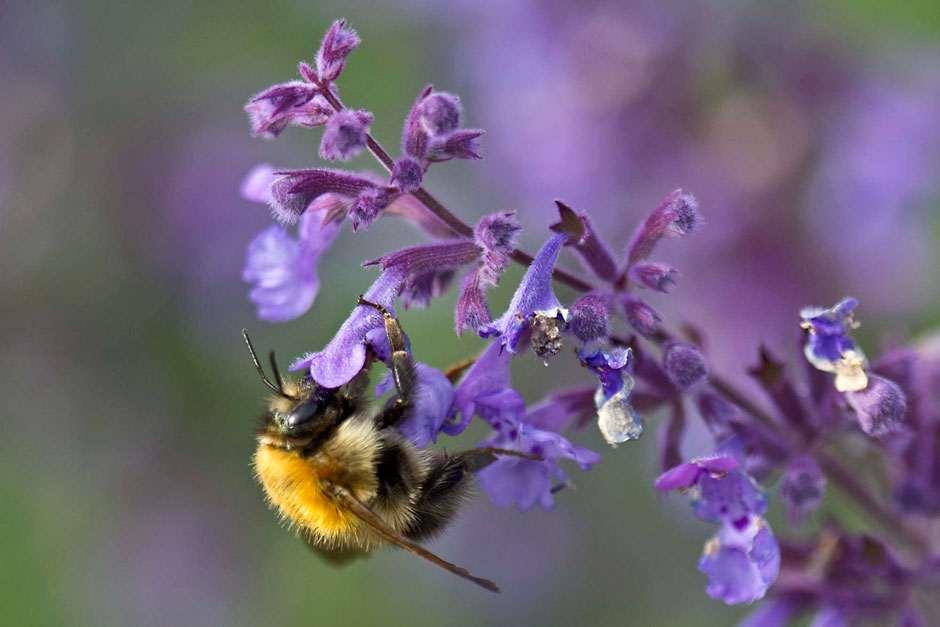Rare harvest mice thriving at RHS Garden Hyde Hall
8 nests belonging to this UK Priority Species discovered in Hyde Hall borders for first time
Harvest mice are the smallest rodent in the UK, weighing in at about 5g – equivalent to a two pence piece. The tiny mice use their long tails as an extra limb, helping them to climb up vegetation in their favoured habitat of grasslands, reedbeds and hedgerows. They build their nests within the vegetation, creating dense, tightly woven balls using strands of grasses and reeds.
Though harvest mice will nest in untended grassy areas such as field margins and road verges, it is unusual to find the diminutive mammal in a cultivated garden environment, making this an exciting and encouraging discovery at Hyde Hall.
Due to the mouse’s small size and secretive habits, its populations are often only known through records of its nests, which become more visible in autumn once vegetation dies back. Appearing on the IUCN Red List of Threatened Species, the harvest mouse is also a UK
At Hyde Hall the first evidence of harvest mice in the cultivated areas of the garden was found within the borders of Clover Hill, when gardeners discovered the nests while cutting back grasses over winter. Clover Hill has large borders, covered in swathes of ornamental grasses and herbaceous perennials, including Calamagrostis, Molinia and Anemanthele. Harvest mice do not use their nests over winter and will build a new nest each spring, with the nesting season lasting from May until October.
These promising finds highlight the importance of cultivated areas for biodiversity, and the potential for gardens to provide a whole ecosystem opportunity for the wide variety of organisms that visit and live in our gardens.
“Rather than removing the ornamental grasses when we cut back in autumn, we are now shredding the material and leaving it on the beds, creating more habitat for invertebrates and overwintering areas for small mammals. This also has the added benefit of improving the soil as
“Our wider estate is managed for wildlife, and has been ‘rewilded’ from intensive farming to managed woodland and meadows, with connective wildlife corridors of long grass and hedgerows re-established. These wildlife corridors run close to the ornamental parts of the garden.”
RHS Senior Ecologist Gemma Golding said: “It was very exciting to hear that Hyde Hall have found a new species in the garden, and this addition helps to show how important garden habitats can be in boosting biodiversity across the UK.
“Gardens are an important extension of native habitats, and as Hyde Hall is surrounded by farmland, it is likely the mice will have come from there and found suitable food and living space in the garden.”


-on-Nepeta-racemosa-Walker-s-Low-_RHS-0000857.jpg?width=940&height=627&ext=.jpg)